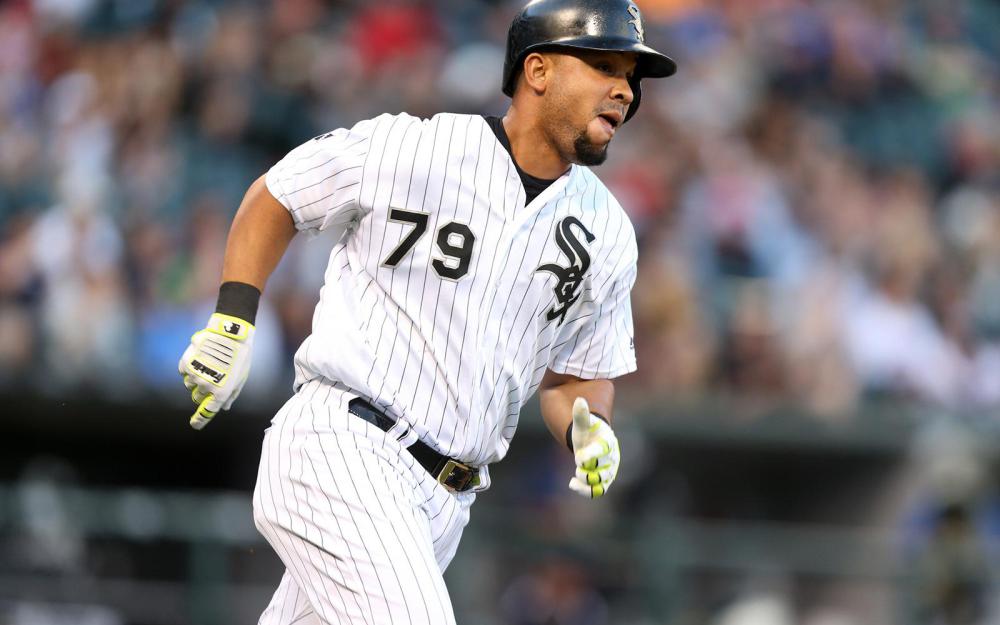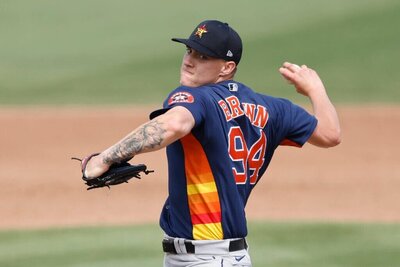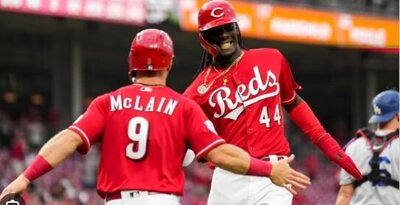Jose Abreu, 1B (CHW)
Abreu contributed in each leg of Monday's doubleheader, tallying an RBI double in Game 1 and hitting his 17th home run in Game 2. Yet he's only hitting .252 this season. The reigning AL MVP has been somewhat of a disappointment. The home runs and RBIs have remained consistent, but a massive drop in batting average is frustrating for fantasy owners who invested a high draft pick on the career .291 hitter. It's easy to see the 61-point decline in BABIP from 2020 as an unlucky cause for the batting average regression, but the explanation for a lower BABIP is not simply bad luck. His line drive rate is a career-low 17.6% and that is based off a career-low 28.6% sweet spot rate. His barrel rate is down four points from last season. Abreu simply isn't hitting the ball as squarely as he did in 2020. Hitting the ball hard? Yes, he is still among the league leaders in that category, which is part of the reason he is still on pace for 30+ homers, but his line drive approach to all fields is lacking. The 50% hard-hit rate leads me to believe it's not an age-related regression and perhaps he will improve over the rest of the season, but for now a .252 average is not what fantasy owners had in mind in the third round.
Lance Lynn, SP (CHW)
Lynn was strong once again on Monday, throwing seven one-run innings with four strikeouts in the first game of a doubleheader. His only blemish was a game-tying solo home run by Nelson Cruz in the 6th. He left with a no-decision when the game went to extra innings. Lynn's ERA has outperformed his xFIP in six of the past seven seasons, including 2021 where it's more than two runs lower. As a flyball pitcher, Lynn is dependent on a favorable HR/FB rate, and this season his flyball rate is a career-high 45% while his HR/FB rate is a low 9 %. There is a reasonable expectation the HR/FB rate will slightly regress, which could impact Lynn's home runs allowed. The low home run totals, along with a career-high strikeout rate, have helped to mask a relatively high walk rate. Eventually walking too many batters while likely allowing a few more homers in the second half will come back to bite Lynn. He is still clearly a must-start and one of the better options in the American League, but regression is coming for the veteran.
J.C. Mejia, SP (CLE)
Mejia has bounced between the minor leagues and majors this season. On Monday he got the callup to start his eighth game of the season for Cleveland. He struck out a career-high eight batters but allowed four runs on seven hits and two walks in 4.1 innings. Mejia has not been particularly effective at any professional level for the past few seasons, but the big league team keeps giving him an opportunity. He throws five pitches, but his sinker is the primary pitch. Yet it's been ineffective while his slider has been fantastic, and he used it more than ever on Monday, generating a 41% CSW and no base hits. It should stand to reason he should be using his slider more often, but Mejia still seems to be figuring out what type of pitcher he wants to be. As a reliever and through his first two starts he was throwing harder and throwing his slider more. As his season has progressed, he is using his slider less and throwing with a lower velocity. As Mejia works through the early parts of his career, fantasy owners can comfortably avoid him. I do like that slider though. Worth keeping an eye on as the 24 year old develops.
Trevor Larnach, OF (MIN)
Larnach was atrocious in Monday's doubleheader, finishing a combined 0-for-7 with five strikeouts. While Larnach has displayed his raw power (90-mph average exit velo; 116-mph max exit velo), he has also demonstrated the high strikeout tendencies that plagued him throughout his minor league career. The Twins continue to overlook his 64.2% contact rate as Larnach regularly bats in the middle of Minnesota's lineup. The team is embracing his three-true-outcome nature, but his ISO is only .151 so he isn't exactly capitalizing on the power he exhibits. That is due to a high ground ball rate. A 47% ground ball rate doesn't jive with Larnach's prodigious power and so his home run totals will be somewhat limited unless he adds a little more launch to his swing. However, if he does that it could elevate his swinging strike rate even higher, which could become unbearable for his batting average. All in all, Larnach is a work in progress, and the Twins appear committed to letting him progress on the major league roster.
Jose Altuve, 2B (HOU)
Altuve was quiet again in Houston's 4-3 win over Cleveland, finishing with one hit in four plate appearances. It's been two weeks since Altuve's last multi-hit game. His batting average has dipped amid a mildly cold streak. His batting average since June 27 is .175. His BABIP during that stretch is .163. Last year Altuve's BABIP fell under .300 for the first time in his career. It is once again hovering below .300 in spite of career highs in exit velo and hard-hit rate. However, some of that can be attributed to a career-high 38% flyball rate. The harder contact and elevated flyball rate has led to more home runs (20), but it is also a catalyst for the lower BABIP. Altuve is also walking a lot this year. The BABIP should be higher and Altuve will likely end up with a batting average closer to .300.
This is just a small sample our daily analysis, join our member area for over 80 daily player updates sent to your inbox every morning and track your team online. Click here for details: http://www.insiderbaseball.



































